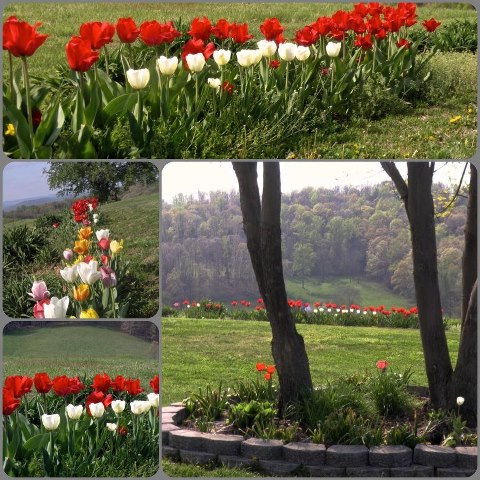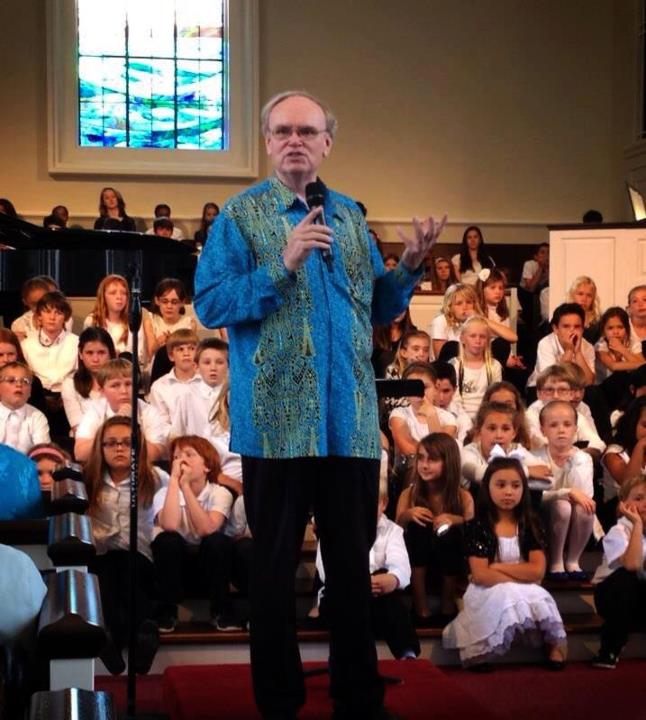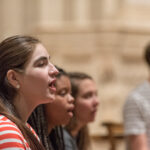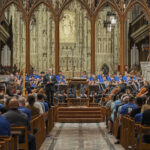See this? As I recall, I first encountered a similar wood graphic in 1974 in Alvin, TX, sitting on the desk of my boss and mentor, Roy Savage, in his church study, three doors down from mine.
For a full two years, during weekly staff meetings in his office, I would stare at the- desk plaque and wonder what in the heck it was. It appeared to me as some abstract tossing together of wood shapes glued on a flat background. Why I never asked Roy about it, I cannot say. It continued to baffle me weekly until years later – after both Roy and I were long gone in different directions from our church posts – when I somewhere spied a similar wood design. Upon seeing it this time, I straightway recognized “Jesus,” which immediately jumped out at me … for the very first time. It blew my brain, and it still fascinates me today as to how I could stair at that design for two-plus years and never see the word “Jesus” hiding in the recessed image.
Before branding me as unobservant, unchristian, unspiritual, unperceptive, or just basically low IQ, I might possibly have a plausible line of defense for the blindness of my youth. The two years in which the wood Jesus alluded me, I was 19 and 20 years old at the time. Perhaps my frontal cortex had not yet formed. Maybe I hadn’t yet developed good patterns of assimilation and judgment … even though I was giving leadership to the church’s teenagers just a couple of years younger than myself (yikes!). Or, perhaps as is true of many late teenagers, I was just not able to connect certain and important dots (and again I say, yikes!). I’m going to need to ask a brain scientist why I could not perceive “the obvious” written in relief but clearly present in the negative image on his dad’s desk.
In my non-scientific mind, I think I might have a clue. I believe I was only looking at that which protruded, that which made the most notable initial impression, that which caught my eye as being more significant because its shapes were bigger, taller, thicker, and more significant size-wise. I continued to fixate only upon what initially caught my attention. Also, I believe I was looking at it from much too close a distance. What do they say … can’t see the forest for the trees?
May I suggest that the best way to try to view this design is to look at it while consciously telling our brains to switch back and forth from the protruding images to the message lying back behind the landscape. Purposefully instructing our brains to see both images is the only sure way to get the whole picture. I further suggest that switching back and forth may well add depth, understanding, and “empathy” to both.
Might this simple story provide us a metaphor for a particularly ugly and vitriolic season of political turmoil? Is it possible that we have spent so much time and energy viewing our own viewpoints and biases and listening to voices inside our own preferred echo chambers that we miss critically essential background messages? And can we keep missing truth for years on end because of longstanding blindness and deeply-buried bigotry (as was my case in Roy Savage’s office)?
Under no circumstances can we find justification for name-calling and passing along misinformation about others. As is often said by my dear friend, Dr. Ed Twedt, there is no place in public discourse for hyperbole, exaggeration, ridicule, or sarcasm. And of course, those are the four most-used weapons around election time. But being a good citizen demands more than just refraining from doing harm. It also includes being proactive to build understanding, trust, and loving relationships.
May we all lose our myopic views of the world by putting others first, seeking new ways of cooperation, and giving ourselves to the lifelong process of healing relationships next door and down the street. It has never been more critical than now that we do our best to gain a view of the whole picture and lose our obsession with our own wellbeing.
Randy Edwards










